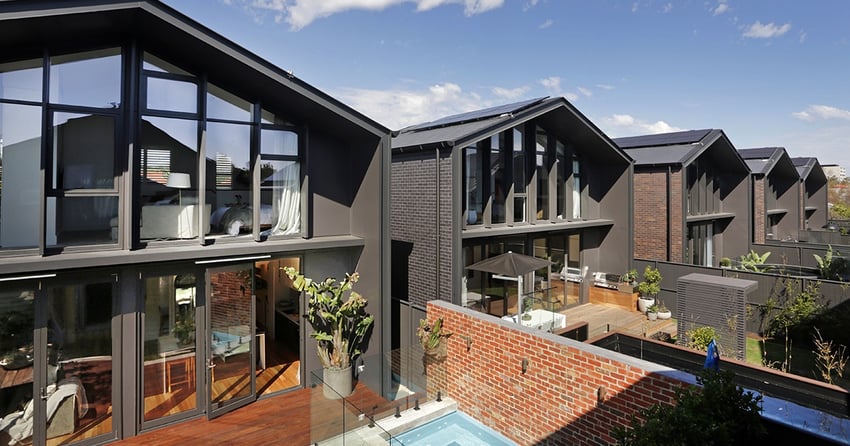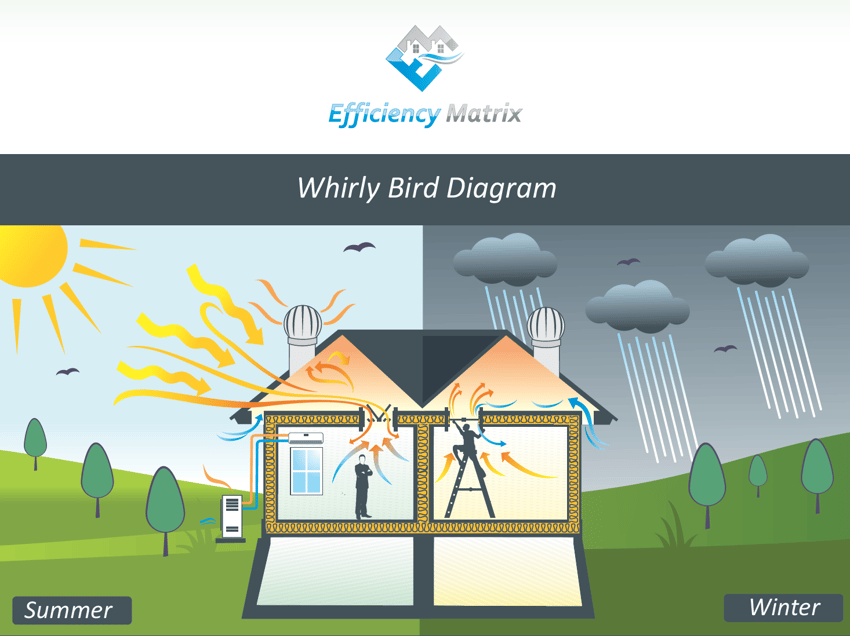6 Design Tips for a 6 Star NatHERS Energy Rating
In 2010 the NCC across Australia lifted the minimum acceptable energy efficiency design standard for residential buildings from 5 to 6 stars using NatHERS approved software.

In 2012 a study was undertaken by the Department of Climate Change and Energy to explore how designers of residential homes in Australia are able to achieve an improved 6 star rated dwelling with the same or less construction costs over a 5 Star dwelling. The results of this study proved that if a project is designed and optimised to suit the climate and orientation for where it is built then on average the energy efficiency improvements are increased by 1 or more stars along with a decrease of 2% of the overall cost of construction.
Well here's how you can apply these locally proven methods to your project to achieve a 6 Star Rated dwelling which performs better and costs less to build.
Here are 6 design tips for a 6 Star NatHERS assessment:
1. Reduce Overall Glazing by 2-3%
Bigger is not always better, larger glazed areas produce greater heat loss in winter and can attract unwanted heat gain in summer. Up to 40% of a home’s heating energy can be lost and up to 87% of heat is gained through glazing. Reducing glazed areas by 2-3% doesn't sound like much but the difference can have a sizeable impact on the energy efficiency of your project.

2. Glaze by Orientation
Orientation of glazing can have a considerable effect on star ratings especially in East and West facing glazing which can cause star rating problems for buildings with a high cooling load by elevating the amount of direct sunlight into a dwelling. These effects are most pronounced in daytime occupied zones which account for a large proportion of the total cooling load. In contrast, north facing windows can have a beneficial impact by facilitating passive heating intemperate and cold climates and, when teamed with adequate shading, can prevent direct sunlight in summer in hot and temperate climates. Similarly in hot climates south facing windows limit direct sunlight, although in cold climates they provide no benefits from passive heating.

To make this easier to understand refer to our 'glazing design cheat sheet below':
For a Hot Climate Zone:
- North Windows: Less overall Glazing, should use horizontal shading to prevent summer heat gain
- South Windows: More overall Glazing (natural light without passive heat gain)
- East Windows: Less glazing to daytime zones with vertical shading
- West Windows: Less glazing to daytime zones with vertical shading
For a Cooler Climate Zone:
- North Windows: More overall glazing for passive heat gain
- South Windows: Less overall glazing to prevent heat loss
- East Windows: Vertical Shading to daytime Zones
- West Windows: Vertical Shading to daytime Zones
3. Internal Room Layout and Zoning
Internal room layout - the placement of rooms within a dwelling has a significant impact on star rating, particularly when considered in conjunction with orientation. In addition to this, zone classification and whether an area is considered as a conditioned (could have mechanical heating or cooling applied) or an unconditioned zone (such as bathrooms and wet areas) in rating software can also influence star rating.
Here are a few practical design tips around Zoning and internal Room Layouts.
A) Group non conditioned spaces like bathrooms and laundries with external windows. Heat loss can and does occur from conditioned spaces through to non conditioned spaces. Grouping these together can reduce the amount of internal surface area of this transitional zone and make it cheaper to insulate as per B)
B) Insulate the internal walls around the non conditioned spaces. This can help reduce the requirements of insulation in the External walls of your project.
C) More occupied (daytime) spaces should be relocated to the South in hot and temperate climate zones with a thermal buffer provided by unconditioned or night-time occupied zones to the North East or West of the dwelling. This goes against a design myth that people generally want to spend most of their days in rooms facing North, which is untrue for hot or temperate climate zones.
The opposite is true for colder climate zones but only in combination with North facing windows to allow the daytime spaces to be used with passive solar heating.
In reality there are other factors to consider when building a house other than energy efficiency, such as location of living areas to optimise views, desires of home owner and functionality. However changes to internal room layout and zoning often would not interfere with other considerations so they can be an easy way to improve star rating without compromising other design features.
4. Roof Colour and Floor Coverings
There is no net cost difference of changing the colour of your roof and little cost difference in choosing an alternate floor finish. If you don't have foil installed in your roof cavity then changing the colour of your roof to an optimal colour range can add as much as a single star difference to your overall rating.
Generally a lighter roof will perform better in warmer and temperate climate zones such as Darwin, Brisbane, Perth and Sydney, while a darker roof will perform better for the colder climates such as Canberra, Melbourne and Hobart.
As for floor coverings these can add as much as half a star to your project. Lets discuss two options for comparison, either polished concrete / Vinyl or Timber Floating Floors, VS Carpet.
Both have their advantages depending on what climate zone you are in. For colder climates carpet performs better as it acts as an insulator to the thermal mass of your slab. For warmer climates a polished concrete / Vinyl or Timber floating floors perform better as they allow for the slab to warm during the day and release heat back into the dwelling in the evening.
5. Shading
For hot and temperate climates an awning shading device is a cost effective way to improve a star rating for your project, which can have the most impact on Northern façade windows as it blocks out the summer sun and allows passive solar heat gain in winter months.
Eave width can have a considerable impact on Star rating in some climate zones. For Perth, Sydney and Adelaide, eve width has little impact on a design, while for warmer climates such as Darwin and Brisbane wider eves up to 800mm produce best results. For cooler climates such as Tasmania and Melbourne no eves performed best.

6. Ventilation
Dwellings in hot, and, to a lesser extent, temperate climates benefit from increased ventilation to remove excess heat in warmer months. Methods to improve ventilation can include increasing the openable window area, ceiling fans, whirly birds to roof space and where dwellings have a raised timber floor, an open sub-floor zone.
On average ventilating a ceiling space in a hot climate through the use of whirly birds can increase the star rating by up to 0.5 stars, and up to 0.2 stars in colder climates.
Note: the positive effects of ceiling fans can not be assessed in all States and Territories in Australia.
Give us a call and we will be happy to share our Energy rating expertise with you.










